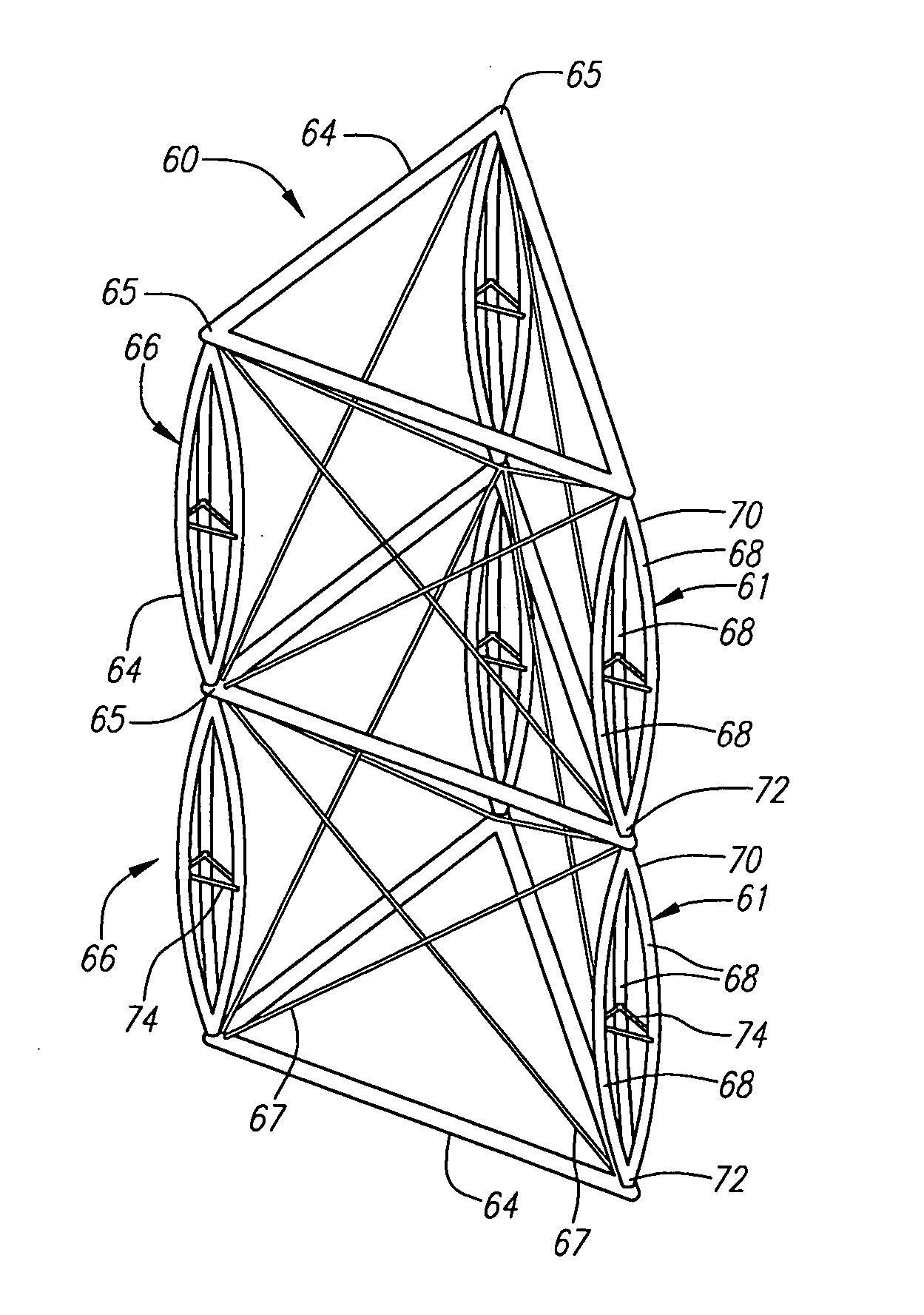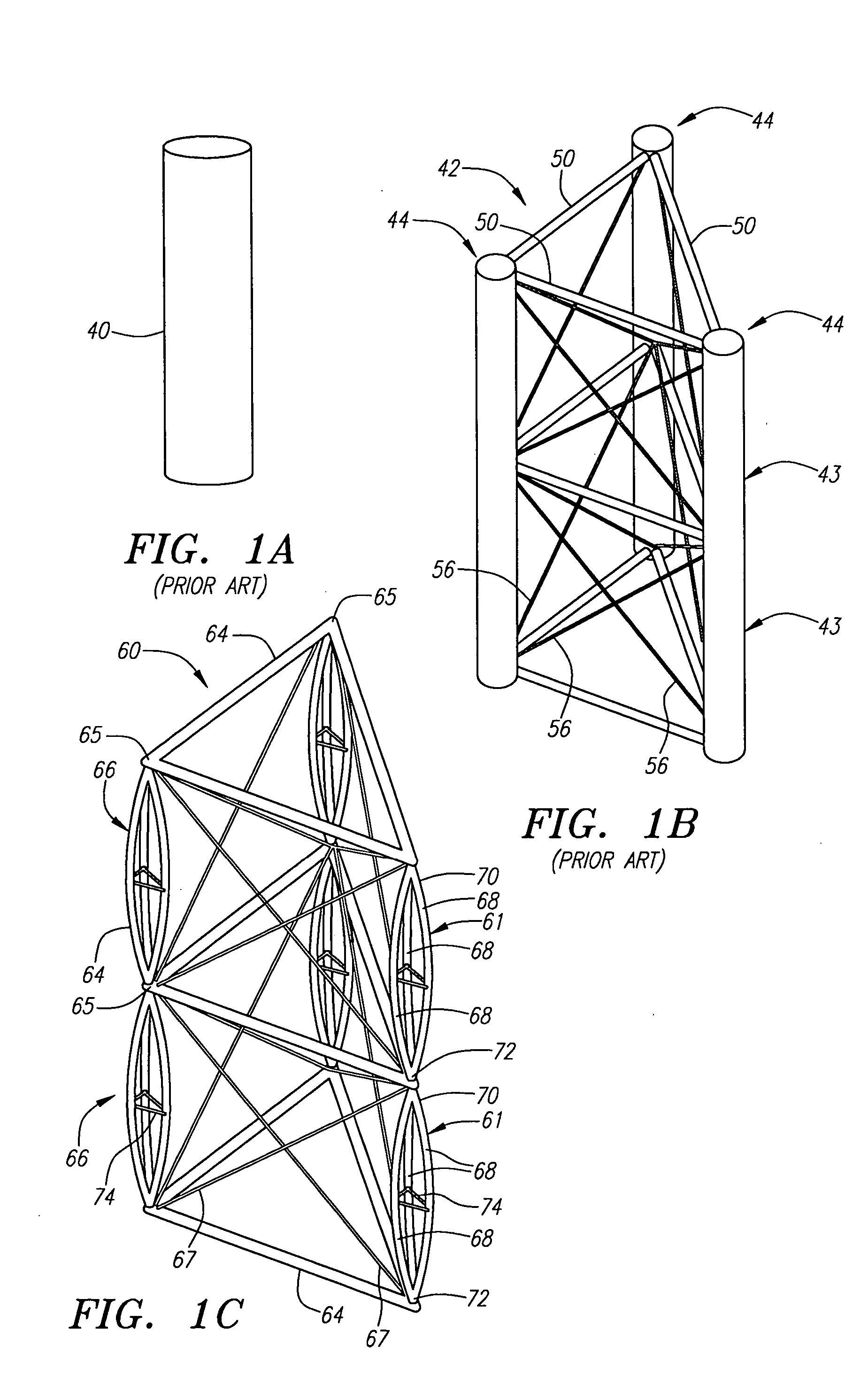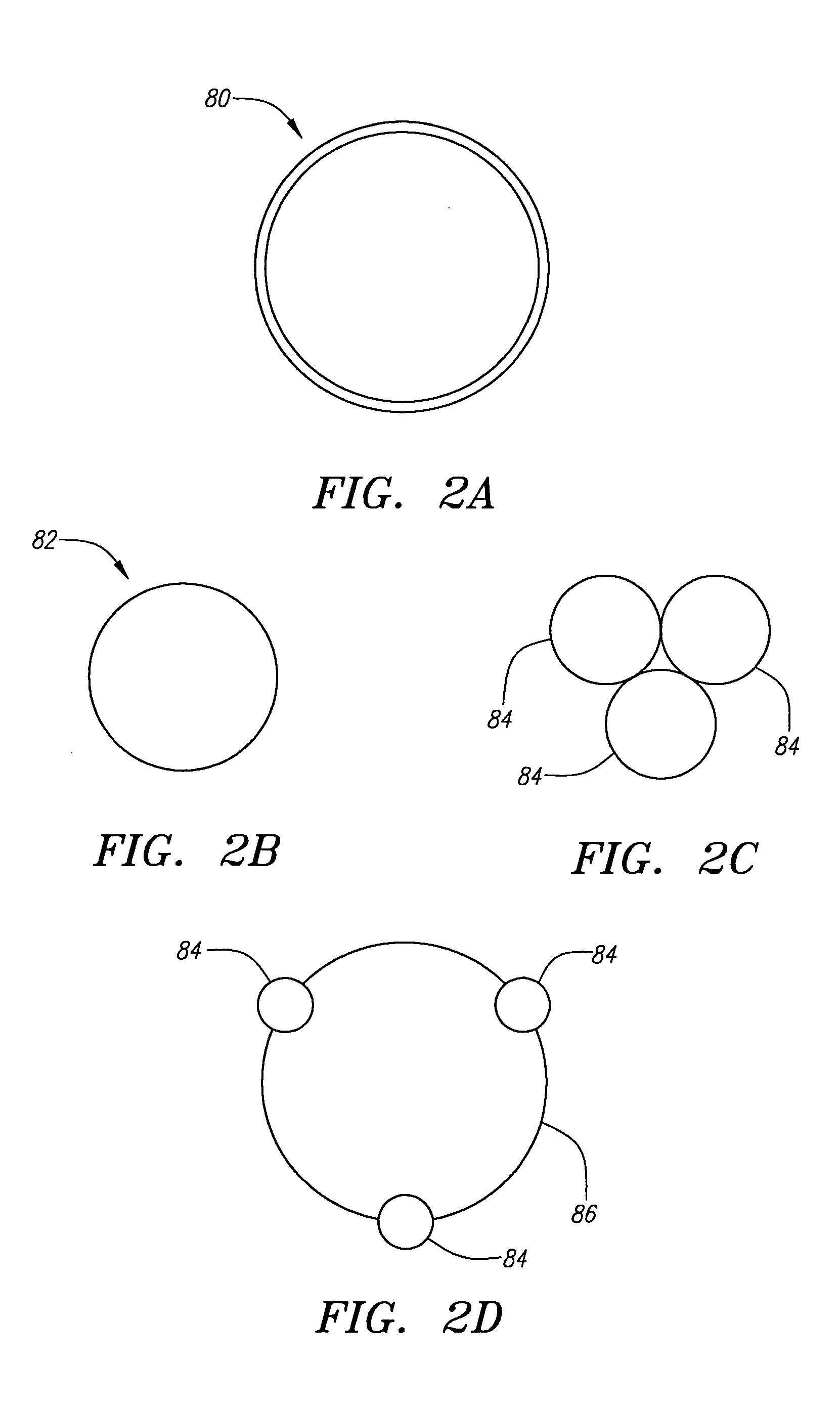Deployable truss having second order augmentation
a truss and second-order technology, applied in the field of deployable truss structures, can solve the problems of thermal induced bending, distortion, and limited utility of stems, and achieve the effects of reducing the free buckling length of individual strut members, increasing the moment of inertia, and buckling strength
- Summary
- Abstract
- Description
- Claims
- Application Information
AI Technical Summary
Benefits of technology
Problems solved by technology
Method used
Image
Examples
Embodiment Construction
[0050] The preferred embodiments of the invention will now be described with reference to the drawings. To facilitate description, reference numerals designating an element in one figure will represent the same element in any other figure.
[0051] Historically, lattice boom trusses have been more effective than simple beams consisting of a rod or tube in lightly loaded space deployable applications. The present invention further improves key performance metrics of lightly loaded deployable trusses for use in space by employing secondary augmentation.
[0052]FIGS. 1A-1D schematically illustrate boom structures exhibiting increasing structural hierarchy. FIG. 1A shows a portion of a boom 40 made from a single solid rod. This is referred to as a 0th-order structure since there is no latticing structure whatsoever.
[0053]FIG. 1B illustrates a portion of a typical prior art lattice boom truss 42. Boom truss 42 comprises three longerons or columns 44. The aggregate area of the three columns...
PUM
 Login to View More
Login to View More Abstract
Description
Claims
Application Information
 Login to View More
Login to View More - R&D
- Intellectual Property
- Life Sciences
- Materials
- Tech Scout
- Unparalleled Data Quality
- Higher Quality Content
- 60% Fewer Hallucinations
Browse by: Latest US Patents, China's latest patents, Technical Efficacy Thesaurus, Application Domain, Technology Topic, Popular Technical Reports.
© 2025 PatSnap. All rights reserved.Legal|Privacy policy|Modern Slavery Act Transparency Statement|Sitemap|About US| Contact US: help@patsnap.com



